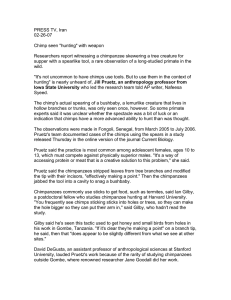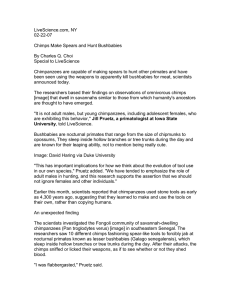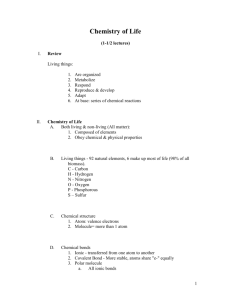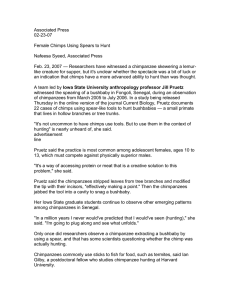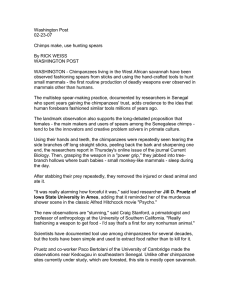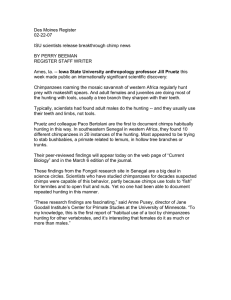Cosmos, Australia 02-26-07 Humans just got younger
advertisement
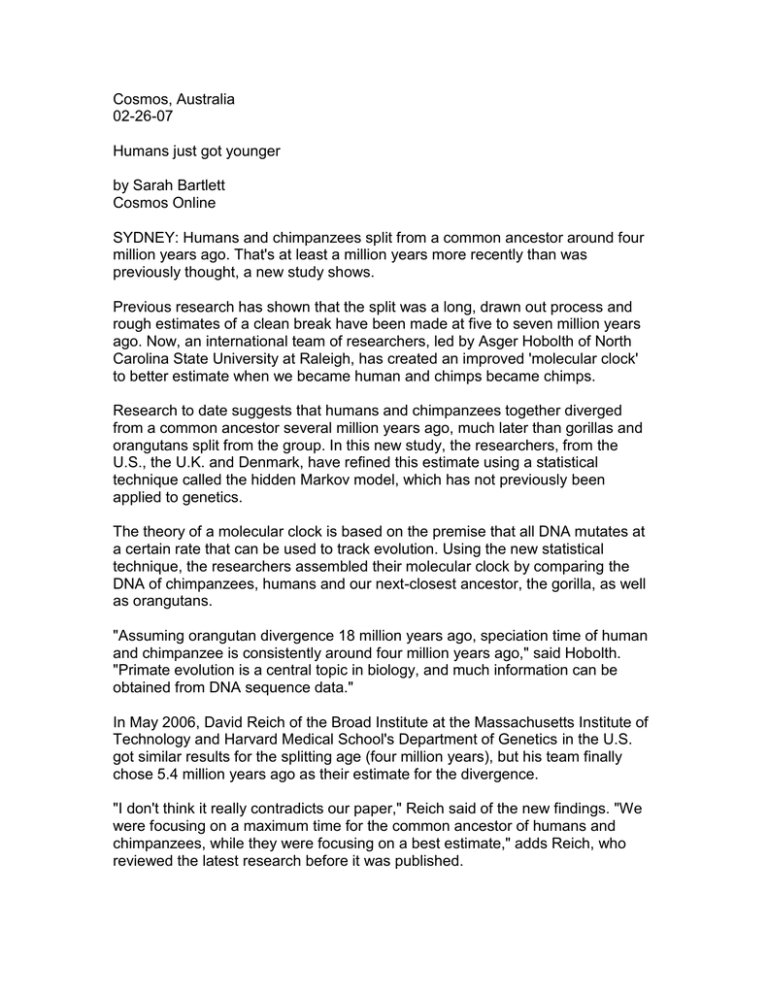
Cosmos, Australia 02-26-07 Humans just got younger by Sarah Bartlett Cosmos Online SYDNEY: Humans and chimpanzees split from a common ancestor around four million years ago. That's at least a million years more recently than was previously thought, a new study shows. Previous research has shown that the split was a long, drawn out process and rough estimates of a clean break have been made at five to seven million years ago. Now, an international team of researchers, led by Asger Hobolth of North Carolina State University at Raleigh, has created an improved 'molecular clock' to better estimate when we became human and chimps became chimps. Research to date suggests that humans and chimpanzees together diverged from a common ancestor several million years ago, much later than gorillas and orangutans split from the group. In this new study, the researchers, from the U.S., the U.K. and Denmark, have refined this estimate using a statistical technique called the hidden Markov model, which has not previously been applied to genetics. The theory of a molecular clock is based on the premise that all DNA mutates at a certain rate that can be used to track evolution. Using the new statistical technique, the researchers assembled their molecular clock by comparing the DNA of chimpanzees, humans and our next-closest ancestor, the gorilla, as well as orangutans. "Assuming orangutan divergence 18 million years ago, speciation time of human and chimpanzee is consistently around four million years ago," said Hobolth. "Primate evolution is a central topic in biology, and much information can be obtained from DNA sequence data." In May 2006, David Reich of the Broad Institute at the Massachusetts Institute of Technology and Harvard Medical School's Department of Genetics in the U.S. got similar results for the splitting age (four million years), but his team finally chose 5.4 million years ago as their estimate for the divergence. "I don't think it really contradicts our paper," Reich said of the new findings. "We were focusing on a maximum time for the common ancestor of humans and chimpanzees, while they were focusing on a best estimate," adds Reich, who reviewed the latest research before it was published. Reich's genetic analysis gave rise to the hypothesis that early human and chimp ancestors could have freely interbred long after their separation. Experts have long known that humans and chimpanzees share a high proportion of DNA, and discovered in 2005 that they are in fact 99.4 per cent genetically identical. In another revelation that challenges the notion of human uniqueness, Jill Pruetz at Iowa State University in Ames has observed a population of savannah chimps (Pan troglodytes verus) hunting bushbabies with spears. It is the first time an animal other than a human has been observed using a tool to hunt a vertebrate. The findings are published in the journal Current Biology.

